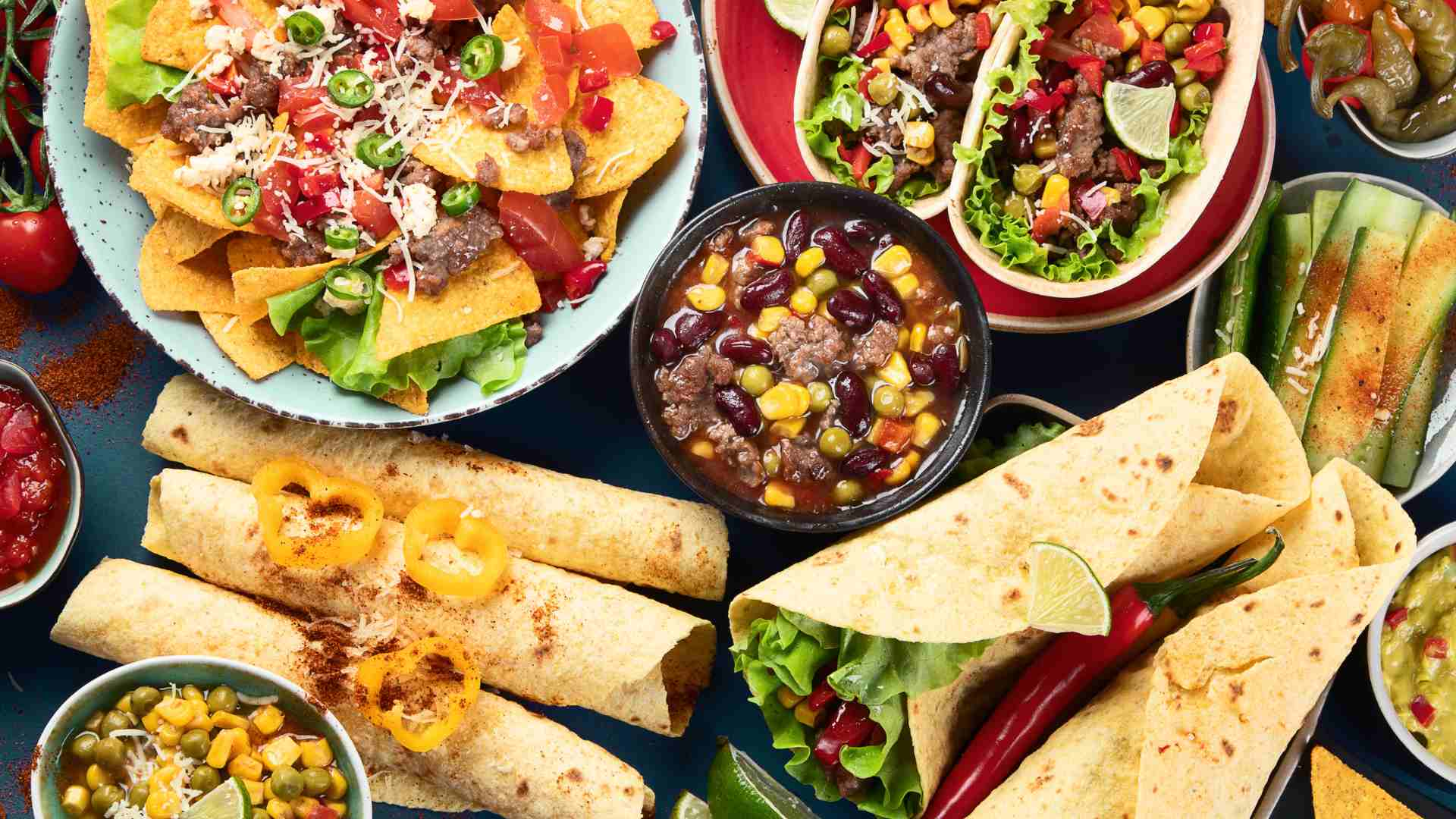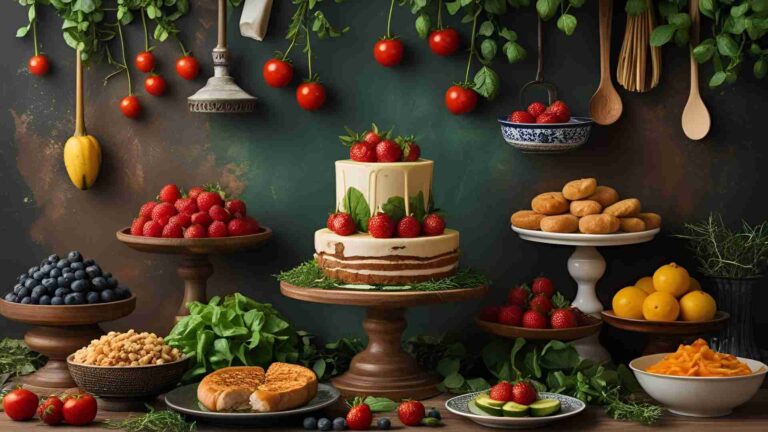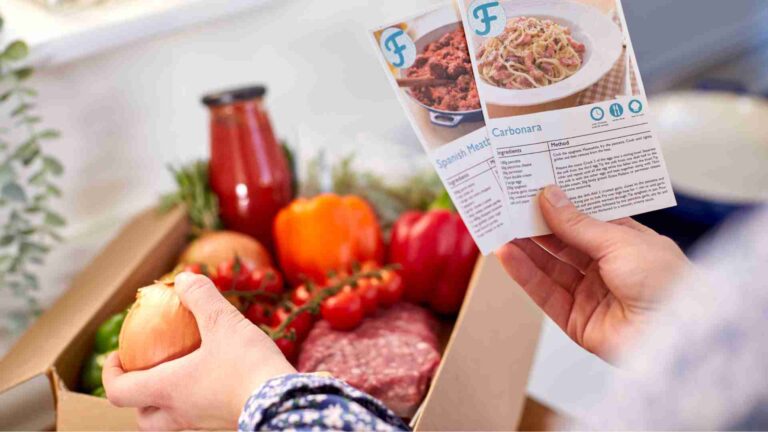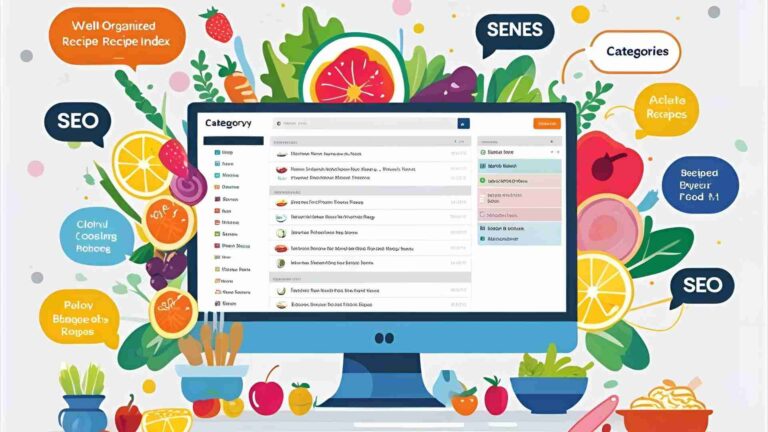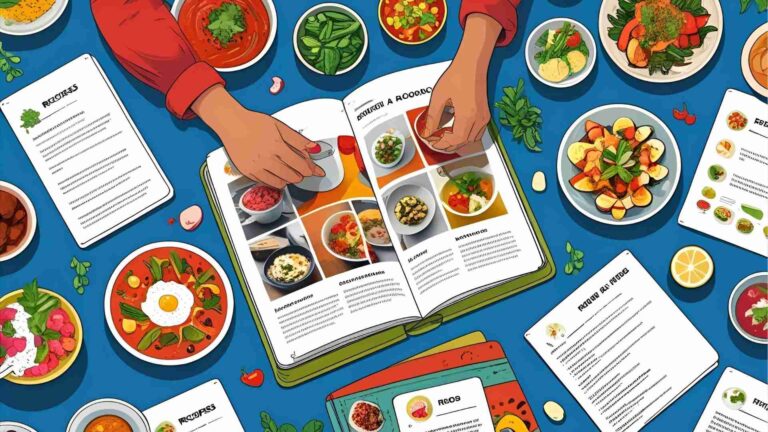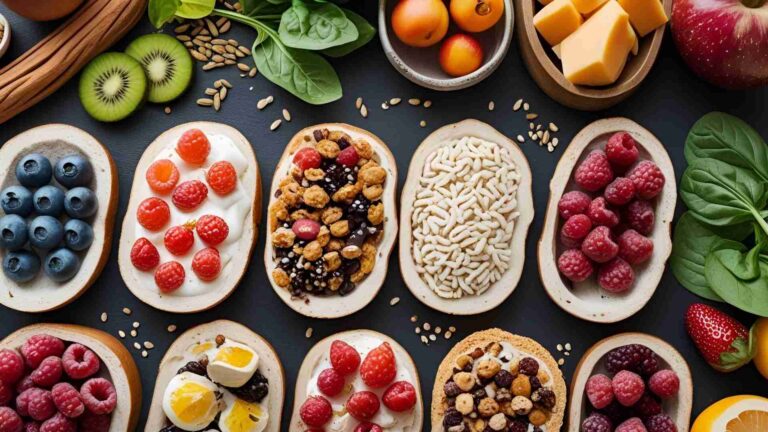Collaborating With Local Food Bloggers and Food Critics
In the dynamic world of food and beverage, local businesses face the challenge of standing out in a crowded market. Collaborating with local food bloggers and critics offers a powerful strategy to enhance visibility, build credibility, and foster community connections. These influencers, with their authentic voices and engaged audiences, can amplify a brand’s presence while driving customer engagement. This comprehensive guide explores the strategies, benefits, and practical steps for forging successful partnerships with food influencers, providing actionable insights for restaurants, cafes, and food brands aiming to thrive in their local markets.
Understanding the Role of Food Bloggers and Critics
Food bloggers and critics are pivotal players in the food industry, shaping consumer perceptions and trends. Their influence stems from their ability to connect with audiences through authentic storytelling and expert evaluations.
The Influence of Food Bloggers
Food bloggers bring a personal touch to their content, sharing culinary experiences, recipes, and dining recommendations. Their relatable narratives resonate with readers seeking trustworthy insights. For instance, a blogger’s detailed review of a new restaurant can spark curiosity among followers, driving foot traffic. Bloggers often focus on niche topics, such as vegan cuisine or local street food, making them ideal partners for businesses targeting specific demographics.
The Authority of Food Critics
Food critics, on the other hand, offer professional assessments grounded in culinary expertise. Writing for established platforms like local newspapers or magazines, their reviews carry significant weight. A positive critique from a respected critic can elevate a restaurant’s reputation, while constructive feedback provides opportunities for improvement. Their evaluations often influence high-end diners and food enthusiasts, making them valuable allies for upscale establishments.
Impact on the Local Food Scene
Both bloggers and critics contribute to the vibrancy of the local food scene. By highlighting unique dining experiences and culinary talents, they attract patrons and foster a sense of community pride. Their content also provides businesses with valuable feedback, helping them refine their offerings to meet customer expectations.
The Power of Social Media in Food Marketing
Social media has revolutionized food marketing, amplifying the reach of bloggers and critics. Platforms like Instagram, TikTok, and YouTube enable influencers to share visually compelling content, from vibrant food photos to engaging recipe videos. These platforms facilitate real-time interaction, allowing businesses to connect with audiences instantly.
Expanding Reach Through Visual Platforms
Instagram, with its 2 billion monthly active users, is a hotspot for food influencers. Reels and stories showcasing dishes or behind-the-scenes kitchen moments can go viral, driving brand awareness. TikTok’s short-form videos are equally impactful, with influencers like @justine_snacks gaining millions of views for creative food content. YouTube, ideal for in-depth tutorials, allows businesses to showcase their culinary expertise through step-by-step recipe videos.
Leveraging User-Generated Content
Social media also thrives on user-generated content. When customers share photos or reviews of their dining experiences, it amplifies a brand’s visibility. Encouraging influencers to prompt their followers to post about a restaurant—using branded hashtags—can create a ripple effect, attracting new patrons. For example, a local cafe might see a surge in visits after a blogger’s followers share their coffee and pastry photos.
Data-Driven Insights
Social media analytics provide businesses with insights into audience preferences and engagement patterns. By tracking metrics like likes, shares, and comments, brands can measure the impact of influencer campaigns and refine their strategies. Tools like Google Analytics and platform-specific insights dashboards are essential for monitoring performance.
Building Effective Collaborations
Successful collaborations with food bloggers and critics hinge on strategic planning and relationship-building. Below are key steps to establish productive partnerships.
Identifying the Right Influencers
Finding the right influencers requires research into their audience, content style, and engagement rates. Tools like BuzzSumo or Influencer Marketing Hub can help analyze a blogger’s reach and demographic alignment. For instance, a vegan restaurant should partner with bloggers who specialize in plant-based cuisine to ensure audience relevance.
Table: Criteria for Selecting Influencers
| Criteria | Description |
|---|---|
| Audience Alignment | Ensure the influencer’s followers match your target demographic (e.g., age, location). |
| Engagement Rate | Look for high interaction rates (likes, comments) over raw follower count. |
| Content Quality | Assess the authenticity and professionalism of their posts. |
| Brand Values | Choose influencers whose ethos aligns with your business (e.g., sustainability). |
Fostering Authentic Relationships
Building trust is critical for long-term partnerships. Engage with influencers by commenting on their posts, sharing their content, or inviting them to exclusive events like menu tastings. Personalized outreach—such as referencing a specific post you admired—shows genuine interest. Hosting a blogger meetup, as seen in collaborations like Bartaco’s event with Style Collective, can strengthen connections.
Creating Mutual Value
Effective collaborations benefit both parties. Offer influencers incentives like complimentary meals, exclusive access to new menu items, or monetary compensation. For bloggers, tools like WP Recipe Maker can enhance their content creation, allowing them to produce professional recipe cards that boost their blog’s SEO and engagement. In return, businesses gain authentic promotions that resonate with audiences.
Chart: Collaboration Workflow
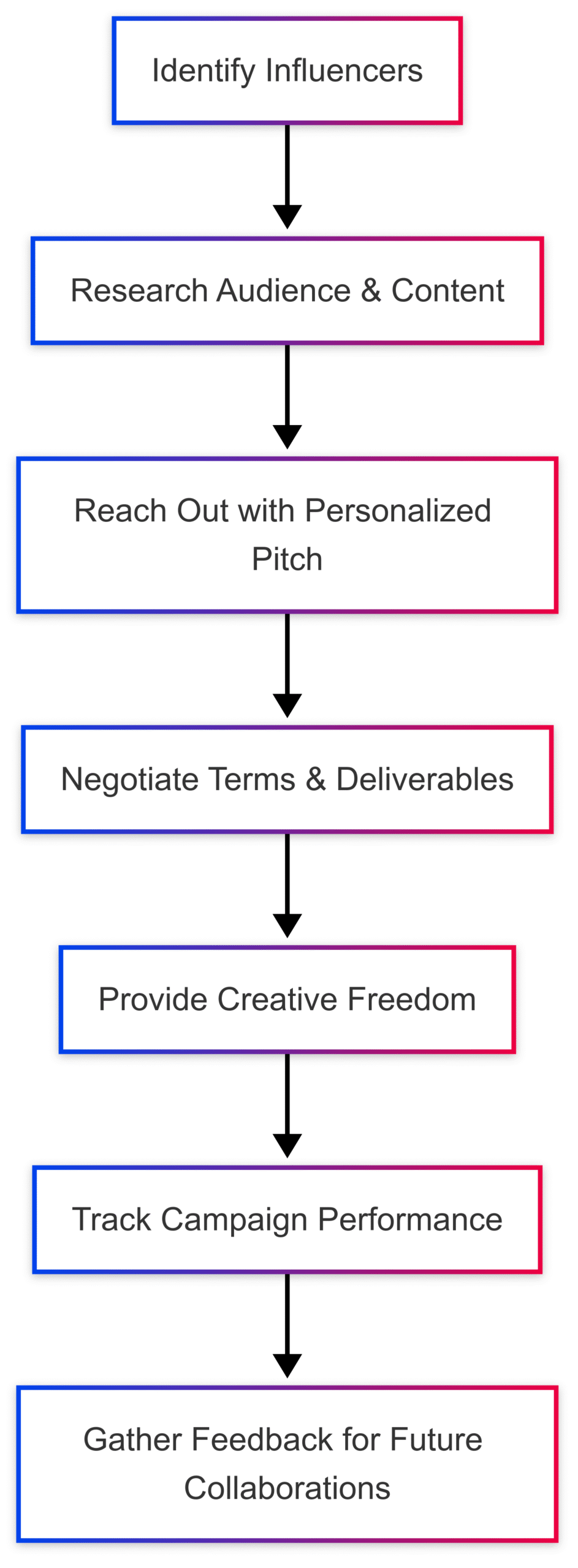
Case Studies of Success
- Local Restaurant and Food Critic: A bistro partnered with a local critic to review a seasonal menu, resulting in a 30% increase in reservations after the review was published in a regional magazine.
- Cafe and Instagram Influencer: A cafe collaborated with a micro-influencer for a series of Instagram reels, leading to a 25% boost in foot traffic over a month, driven by user-generated content.
These examples highlight the importance of aligning campaign goals with influencer strengths, whether it’s a critic’s authority or a blogger’s visual storytelling.
Developing a Strategic Marketing Plan
A well-crafted marketing plan ensures collaborations align with business objectives. Key components include setting goals, leveraging influencer reach, and planning content timelines.
Setting SMART Goals
Establish Specific, Measurable, Achievable, Relevant, and Time-bound (SMART) goals to guide your campaign. For example:
- Specific: Increase Instagram followers by 500.
- Measurable: Track follower growth using Instagram Insights.
- Achievable: Partner with two local influencers with engaged audiences.
- Relevant: Align with goal of boosting brand awareness.
- Time-bound: Achieve within 30 days.
Regularly review progress using tools like Google Analytics to ensure goals remain on track.
Leveraging Influencer Reach
Influencers with high engagement rates can amplify your message. Focus on micro-influencers (10,000–50,000 followers) for niche audiences, as they often have higher engagement rates (5–10%) compared to macro-influencers (1–2%). For example, a local bakery might partner with a blogger known for dessert reviews to reach pastry enthusiasts.
Planning Content Timelines
Create a content calendar to align posts with key events, such as holidays or product launches. Tools like Trello or Asana can streamline scheduling. For instance, a restaurant might plan a series of influencer posts leading up to a summer menu launch, ensuring consistent messaging across platforms.
Table: Sample Content Calendar
| Date | Content Type | Platform | Influencer | Goal |
|---|---|---|---|---|
| Week 1 | Recipe Post | Blog | Blogger A | Drive blog traffic |
| Week 2 | Instagram Reel | Blogger B | Boost engagement | |
| Week 3 | Restaurant Review | Magazine | Critic C | Enhance credibility |
| Week 4 | Live Cooking Demo | TikTok | Blogger A | Attract new followers |
Executing the Collaboration
Effective execution involves clear guidelines, performance tracking, and feedback collection.
Guidelines for Sponsored Content
Provide influencers with guidelines on tone, style, and deliverables (e.g., one Instagram post, two stories). Encourage creativity while ensuring brand alignment. For example, a restaurant might ask a blogger to highlight its farm-to-table ethos in a recipe post. Adhere to advertising standards, such as the UK Code of Non-broadcast Advertising, to maintain transparency.
Tracking Campaign Performance
Monitor metrics like website traffic, social media engagement, and sales using tools like Google Analytics and UTM codes. Establish KPIs, such as a 20% increase in reservations or 1,000 new Instagram followers. Regular reviews allow for real-time adjustments to optimize outcomes.
Gathering Feedback
Post-campaign feedback from influencers provides insights into what worked and what didn’t. Conduct surveys or interviews to understand their experience and audience reactions. For example, a blogger might suggest more interactive content, like live Q&As, for future campaigns.
Maintaining Long-Term Relationships
Sustaining relationships with influencers ensures recurring opportunities and deeper brand advocacy.
Sustaining Engagement
Stay connected through regular communication, such as sharing product updates or inviting influencers to exclusive events. Acknowledge their contributions by reposting their content or featuring them on your channels. For instance, a restaurant might tag a blogger in a post thanking them for a review, fostering goodwill.
Planning Recurrent Collaborations
Plan multi-campaign agreements to maintain consistency. For example, a cafe might collaborate with a blogger for quarterly recipe posts, ensuring ongoing visibility. Use collaborative tools like Slack to streamline communication and track project timelines.
Supporting Local Businesses
Collaborations with bloggers and critics can uplift the entire local food ecosystem by promoting culinary talents and sharing authentic recipes.
Promoting Local Culinary Talents
Highlighting chefs and artisans through influencer content draws attention to their skills. Bloggers can share chef interviews or behind-the-scenes stories, while critics can review signature dishes. Collaborative events, like pop-up dinners, allow chefs to showcase their creativity, as seen in events organized via Eventbrite.
Sharing Local Recipes
Sharing recipes with cultural significance preserves local traditions and engages audiences. For example, a blogger might publish a recipe for a regional dish, detailing its origins and ingredient sourcing. This not only attracts food enthusiasts but also encourages patrons to visit restaurants offering these dishes.
Mermaid Chart: Benefits of Local Recipe Sharing
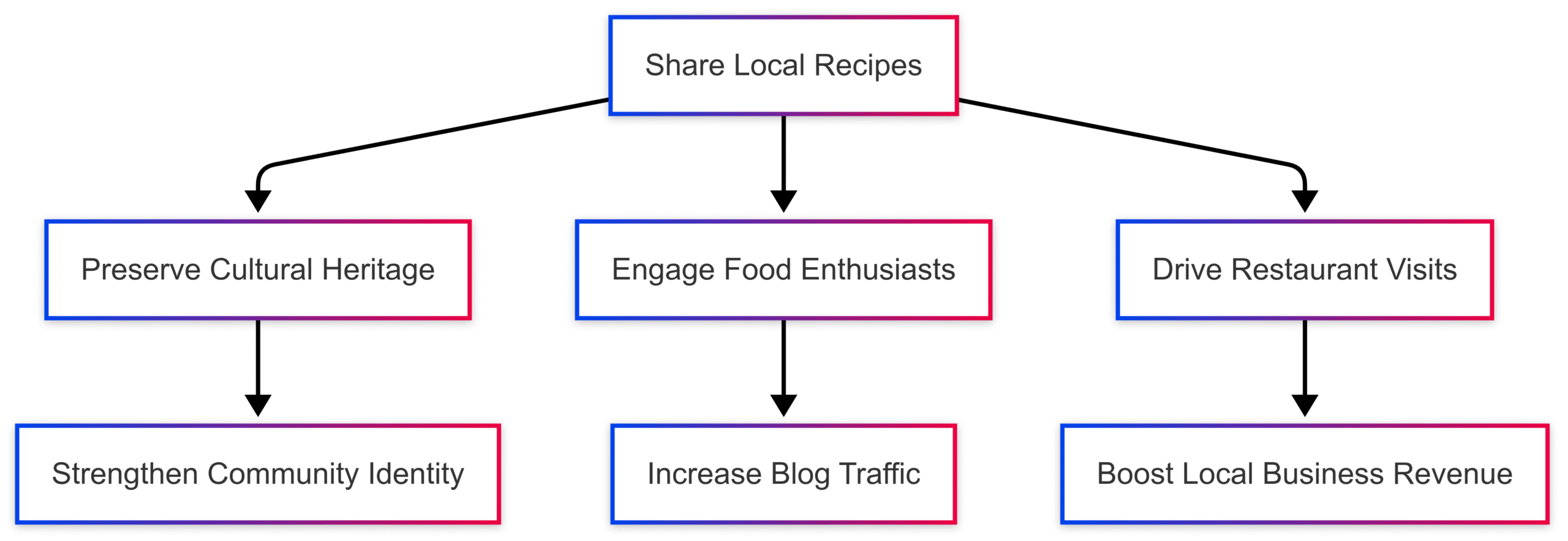
Tools and Platforms for Collaboration
Technology enhances the efficiency and impact of influencer partnerships. Below are key tools for food bloggers and businesses.
WP Recipe Maker
WP Recipe Maker is a WordPress plugin designed for food bloggers, offering features like customizable recipe cards, SEO optimization, and monetization options. Its adjustable serving sizes and nutrition calculations enhance user experience, while affiliate link integration boosts revenue.
Table: WP Recipe Maker Features
| Feature | Benefit |
|---|---|
| Customizable Recipe Cards | Professional, mobile-friendly presentation |
| SEO Optimization | Improves search engine rankings |
| Affiliate Link Integration | Generates income through product promotions |
| Nutrition Calculations | Supports health-conscious readers |
Pricing: Starts at $49/year for a single site license.
Social Media Platforms
- Instagram: Ideal for visual content (reels, stories). Free to use, with optional paid advertising.
- TikTok: Best for short-form videos. Free, with in-app monetization for influencers.
- YouTube: Suited for long-form tutorials. Free, with ad revenue sharing for creators.
Analytics Tools
- Google Analytics: Tracks website traffic and campaign performance. Free.
- BuzzSumo: Analyzes influencer reach and content performance. Starts at $199/month.
- Trello/Asana: Manages content calendars and project timelines. Free basic plans available.
Ethical Considerations
Transparency is crucial in influencer collaborations. Disclose sponsored content to maintain trust, adhering to guidelines from bodies like the Advertising Standards Authority. Ensure reviews remain honest, avoiding overly promotional language that could undermine credibility.
Frequently Asked Questions
How do food critics impact restaurant reputations?
Critics shape public opinion through professional reviews, influencing customer traffic and brand perception.
What strategies attract prominent food influencers?
Offer unique experiences, like exclusive tastings, and share compelling stories about your brand.
How do bloggers evaluate dining experiences?
They assess taste, presentation, service, atmosphere, and menu creativity.
What are the benefits of recipe round-ups?
They expand reach, enhance content variety, and drive traffic through shared audiences.
How can businesses ensure ethical partnerships?
Maintain transparency, disclose sponsorships, and prioritize authentic content.
Conclusion
Collaborating with local food bloggers and critics is a transformative strategy for food businesses seeking to enhance visibility and build community connections. By leveraging the authentic voices of influencers, businesses can tap into engaged audiences, boost credibility, and drive growth. From identifying the right partners to executing strategic campaigns and sustaining long-term relationships, each step requires careful planning and genuine engagement. With tools like WP Recipe Maker and platforms like Instagram, businesses and influencers alike can create compelling content that resonates with audiences. By fostering these partnerships, local food businesses not only elevate their brand but also contribute to a thriving culinary ecosystem.
Please share this Collaborating With Local Food Bloggers and Food Critics with your friends and do a comment below about your feedback.
We will meet you on next article.
Until you can read, Google Analytics: A Beginner’s Guide for Food Bloggers
